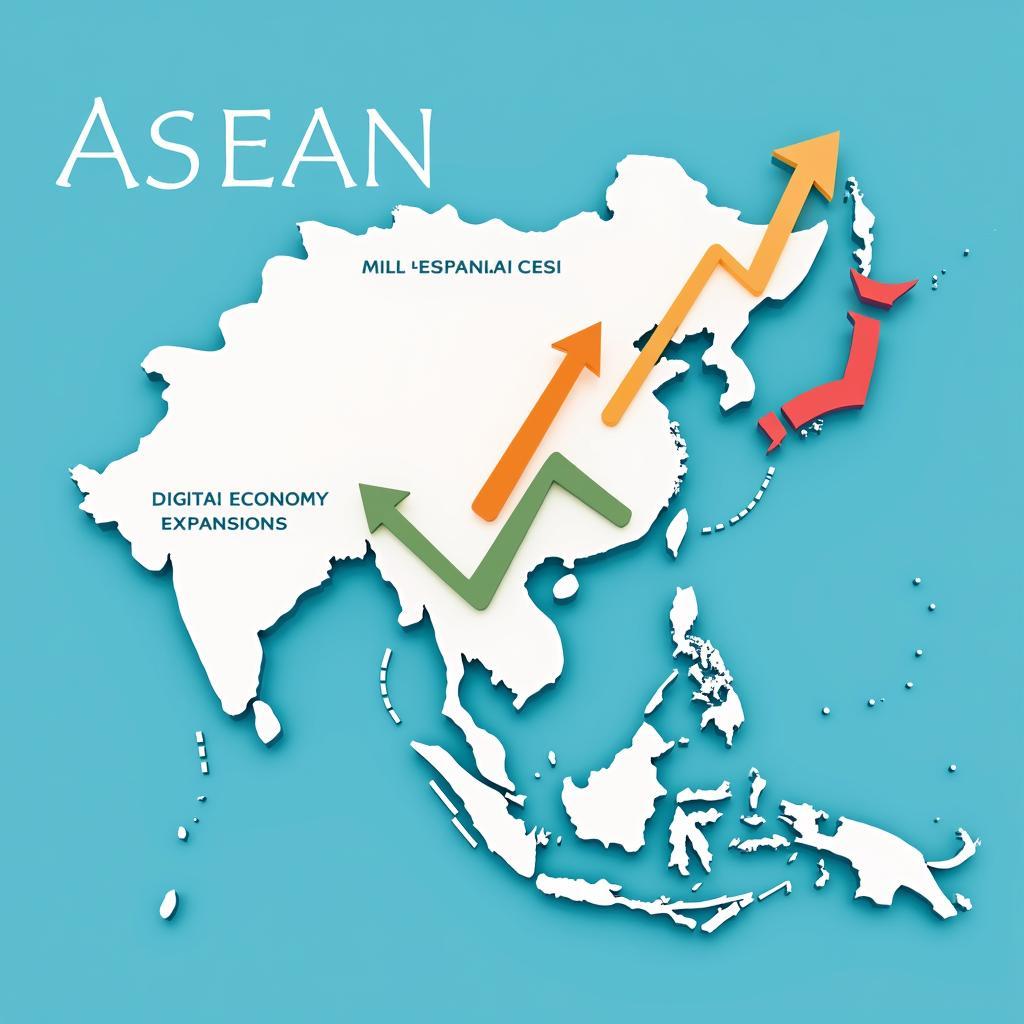ASEAN revenue in 2021 reflected a complex interplay of factors, from the ongoing pandemic to burgeoning digital economies. Understanding the nuances of this financial landscape is crucial for businesses and investors seeking to tap into the region’s potential. This article delves into the key drivers shaping ASEAN revenue in 2021, offering valuable insights into the economic performance of Southeast Asia.
Key Factors Influencing ASEAN Revenue in 2021
Several significant factors played a crucial role in shaping ASEAN revenue streams during 2021. The COVID-19 pandemic undoubtedly cast a long shadow, disrupting supply chains and impacting consumer spending. However, the resilience of the region’s digital economy and the adaptability of businesses also emerged as prominent themes.
- The Impact of COVID-19: The pandemic’s economic fallout varied across ASEAN nations. Countries heavily reliant on tourism experienced significant declines in revenue, while those with robust manufacturing sectors fared comparatively better. Government stimulus packages and support measures played a crucial role in mitigating the economic damage.
- Rise of the Digital Economy: E-commerce and digital services witnessed exponential growth in 2021, providing a much-needed boost to ASEAN revenue. The accelerated digital adoption by consumers and businesses created new opportunities for innovation and growth.
- Intra-ASEAN Trade: Despite global disruptions, intra-ASEAN trade demonstrated remarkable resilience, contributing significantly to the region’s overall revenue. This highlights the importance of regional cooperation and economic integration.
Analyzing Sector-Specific Revenue Trends
Examining the revenue performance of key sectors offers a more granular understanding of the ASEAN economic landscape in 2021. The tourism sector, traditionally a major revenue contributor, faced unprecedented challenges, while manufacturing and technology demonstrated resilience and growth potential.
- Tourism’s Struggle: The travel restrictions and border closures imposed to curb the pandemic severely impacted tourism revenue across ASEAN. Countries heavily reliant on this sector, such as Thailand and Indonesia, experienced substantial declines in earnings.
- Manufacturing’s Resilience: Manufacturing, a cornerstone of many ASEAN economies, demonstrated remarkable resilience in 2021. The sector benefited from global demand for essential goods and the diversification of supply chains away from China.
Understanding the Long-Term Implications
ASEAN revenue in 2021 served as a pivotal indicator of the region’s economic resilience and adaptability. The lessons learned during this challenging year are crucial for shaping future growth strategies and fostering sustainable development.
- Investing in Digital Infrastructure: The rapid growth of the digital economy underscores the need for continued investment in digital infrastructure. Expanding internet access and enhancing digital literacy are crucial for unlocking the full potential of the ASEAN market.
- Strengthening Regional Cooperation: The importance of intra-ASEAN trade in mitigating the pandemic’s economic impact highlights the need for stronger regional cooperation. Enhanced trade facilitation and harmonization of regulations can further boost economic integration and resilience.
What were the main contributors to ASEAN revenue in 2021?
While impacted by the pandemic, sectors like manufacturing and the burgeoning digital economy contributed significantly to ASEAN revenue in 2021.
“The pandemic accelerated digital adoption, creating new revenue streams and opportunities in ASEAN,” observes Dr. Maya Sharma, a leading economist specializing in Southeast Asian markets.
How did the pandemic affect ASEAN revenue streams?
The pandemic disrupted supply chains and impacted consumer spending, leading to varied revenue outcomes across ASEAN nations depending on their economic structure.
“Tourism-dependent economies suffered significant setbacks, while those with robust manufacturing sectors were better positioned to weather the storm,” adds Dr. Sharma.
What is the outlook for ASEAN revenue growth?
The long-term outlook for ASEAN revenue growth remains positive, driven by a young and growing population, increasing urbanization, and the ongoing expansion of the digital economy.
“ASEAN’s adaptability and commitment to regional cooperation position it well for future economic success,” concludes Dr. Sharma.
In conclusion, understanding ASEAN revenue in 2021 provides crucial insights into the region’s economic dynamics. While the pandemic posed significant challenges, the resilience of key sectors and the rapid growth of the digital economy underscore ASEAN’s potential for sustainable growth. Continued investment in digital infrastructure and strengthened regional cooperation will be key to unlocking the region’s full economic potential.
 ASEAN Economic Outlook and Future Growth
ASEAN Economic Outlook and Future Growth
FAQ:
- What were the major economic challenges faced by ASEAN in 2021?
- How did the digital economy contribute to ASEAN revenue in 2021?
- What are the key sectors driving ASEAN economic growth?
- What role does intra-ASEAN trade play in the region’s economic resilience?
- What are the future prospects for ASEAN revenue growth?
- How can businesses leverage the opportunities presented by the ASEAN market?
- What are the key government initiatives supporting economic growth in ASEAN?
Need Support? Contact us 24/7:
Phone: 0369020373
Email: aseanmediadirectory@gmail.com
Address: Thon Ngoc Lien, Hiep Hoa, Bac Giang, Vietnam.

